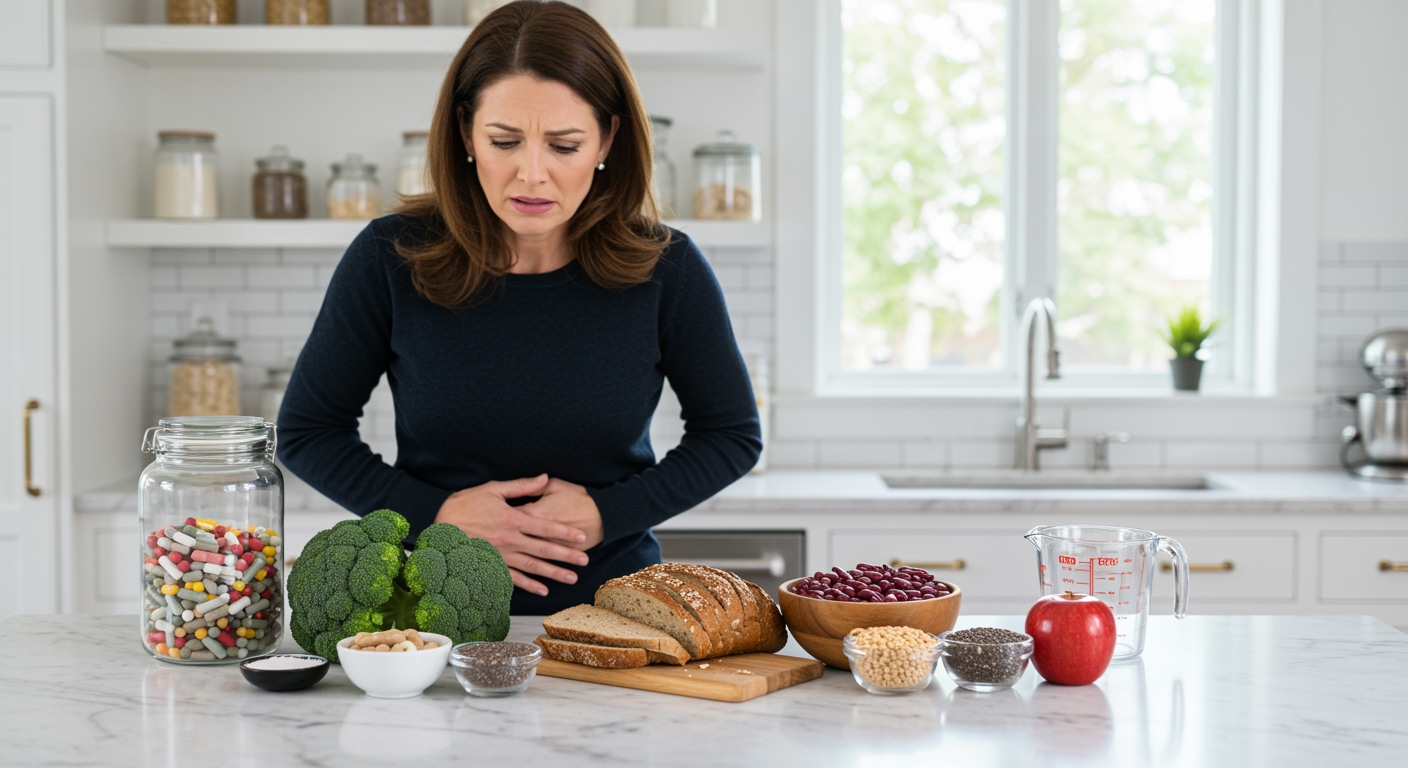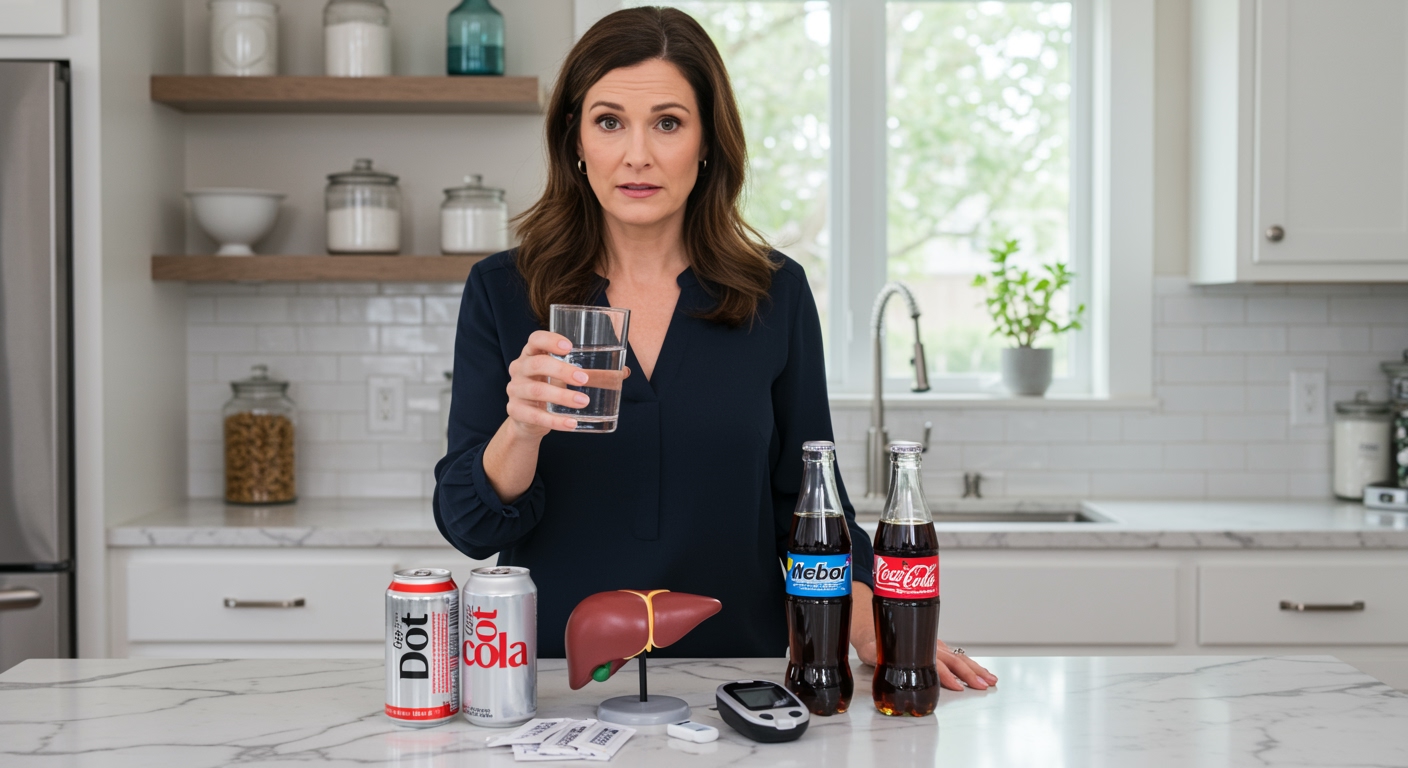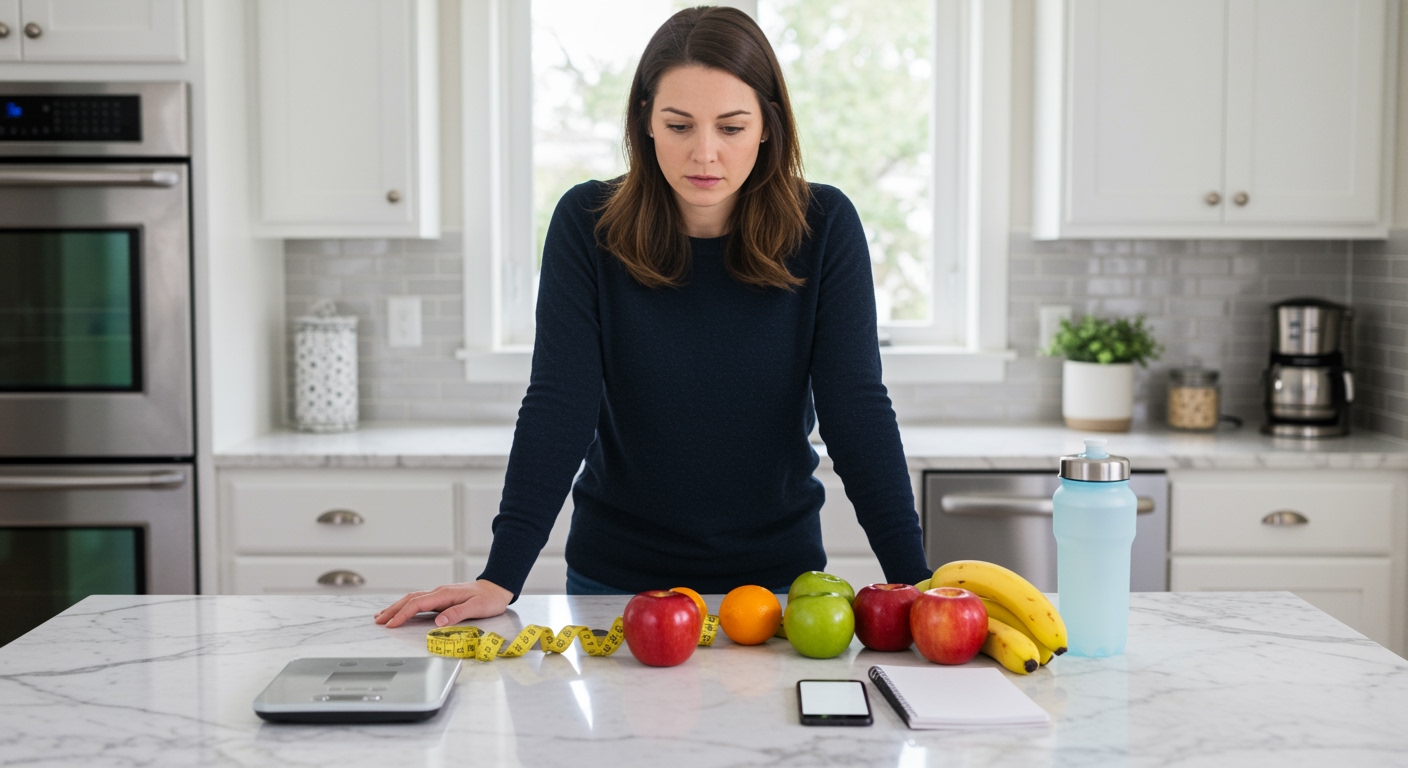✪ Key Highlight: Fibermaxxing trend pushes people to consume 50-100g daily fiber, causing digestive problems and nutrient deficiencies.
Introduction
Social media influencers are promoting a dangerous new trend called fibermaxxing that pushes people to consume extreme amounts of fiber daily.
This trend encourages people to eat between 50 and 100 grams of fiber per day, which is far beyond the recommended 25 grams for women and 38 grams for men.
Hi, I’m Abdur, your nutrition coach and today I’m going to analyze the fibermaxxing trend and explain why this extreme approach to fiber consumption is causing serious health problems.
What Makes Fibermaxxing So Popular Right Now?
The fibermaxxing trend gained momentum because 95 percent of Americans are not getting enough fiber in their daily diet.
Rising colon cancer rates among younger adults have made people more aware of their low fiber intake and desperate for quick solutions.
Registered dietitian Steph Grasso explains that protein has always gotten the spotlight, but people are now trying to maximize fiber consumption to address health concerns.
Fiber helps control blood sugar levels by slowing glucose absorption and can lower LDL cholesterol, which reduces heart disease risk.
The weight management benefits of fiber also attract people because it adds bulk to food and helps you feel fuller longer.
Research shows that fiber-rich diets can lower type 2 diabetes risk, support healthy hormone levels, and may reduce certain cancer risks.
✪ Fact: Soluble fiber binds to cholesterol molecules and helps your body excrete them instead of absorbing them into your bloodstream.
Why Does Extreme Fiber Consumption Cause Problems?
Lewis Mattin, a senior lecturer in life sciences at the University of Westminster, warns that no robust studies have examined long-term fiber intakes over 40 grams daily in humans.
Suddenly increasing fiber intake causes your gut bacteria to struggle with fermenting the excess amount, leading to uncomfortable digestive symptoms.
People who try fibermaxxing commonly experience bloating, cramping, constipation, and excessive gas because their digestive system becomes overwhelmed.
Your body needs time to adjust to higher fiber levels, and jumping from low to extremely high amounts creates digestive chaos.
The fermentation process in your colon produces gas as a byproduct, and too much fiber creates excessive gas production that causes discomfort.
These symptoms are your body’s way of signaling that it cannot handle the sudden dramatic increase in fiber consumption.
✪ Pro Tip: Your gut bacteria need several weeks to adapt to increased fiber levels, so gradual changes prevent uncomfortable symptoms.
How Does Fibermaxxing Affect Nutrient Absorption?
Excessive fiber consumption can crowd out other important nutrients in your diet when you focus solely on fiber-rich foods.
Loading up on fiber supplements or powders while skipping foods that provide protein and healthy fats creates an unbalanced diet.
Too much fiber interferes with your body’s ability to absorb essential minerals like iron, calcium, and zinc from your food.
This interference happens because fiber can bind to these minerals and carry them out of your body before absorption occurs.
People who rely mostly on fiber supplements instead of whole foods face the greatest risk of nutrient deficiencies.
Mattin explains that rapidly increasing fiber intake can interfere with both micronutrients that support normal body function and macronutrients that provide energy.
✪ Note: Whole foods provide fiber along with other nutrients, while supplements offer isolated fiber without additional nutritional benefits.
Who Should Avoid Fibermaxxing Completely?
People with irritable bowel syndrome (IBS) should avoid fibermaxxing because sudden fiber increases can worsen their existing digestive symptoms.
Those with inflammatory bowel disease (IBD), Crohn’s disease, or ulcerative colitis face increased inflammation and symptom flare-ups from excessive fiber.
Individuals who recently had stomach or intestinal surgery need to follow their doctor’s dietary recommendations instead of extreme fiber trends.
People preparing for a colonoscopy must avoid high-fiber diets as instructed by their healthcare provider for proper procedure preparation.
Anyone with existing digestive disorders should consult their doctor before making dramatic dietary changes like fibermaxxing.
✪ Pro Tip: Always discuss significant dietary changes with your healthcare provider, especially if you have existing medical conditions.
What Is The Safe Way To Increase Fiber Intake?
The best approach to increasing fiber is to add small amounts gradually to each meal over several weeks.
Drinking plenty of water becomes crucial when increasing fiber because fiber absorbs water and can cause constipation without adequate hydration.
Focus on getting fiber from whole foods like fruits, vegetables, whole grains, legumes, nuts, and seeds rather than relying on supplements.
Whole foods provide fiber along with other nutrients that support your overall health and gut microbiome.
Aim for the recommended daily amounts of 25 grams for women and 38 grams for men rather than pursuing extreme quantities.
Mattin advises skipping social media fads and aiming for balance with whole grains, vegetables, nuts, and seeds for optimal gut health.
✪ Pro Tip: Increase fiber by 5 grams per week to allow your digestive system time to adapt without uncomfortable side effects.
The Bottom Line
Fibermaxxing represents another dangerous social media trend that takes a good thing too far and creates health problems instead of solutions.
More is not always better when it comes to nutrition, and your body works best with balanced, gradual changes rather than extreme approaches.
I want to hear your thoughts about this fibermaxxing trend and whether you have questions about safely increasing fiber in your diet, so please share your comments below.
References
At NutritionCrown, we use quality and credible sources to ensure our content is accurate and trustworthy. Below are the sources referenced in creating this article:
- Reem Hospital: Fibermaxxing Health Hub
- IFL Science: Fibermaxxing Valid Health Hack or Fast Pass to Flatulence
- Good Morning America: Fibermaxxing Food Trend Diet Tips
- Conway Medical Center: Fibermaxxing Latest Trend Actually Good for Health
- Science Alert: Fibermaxxing Wellness Trend May Pose Health Risks





